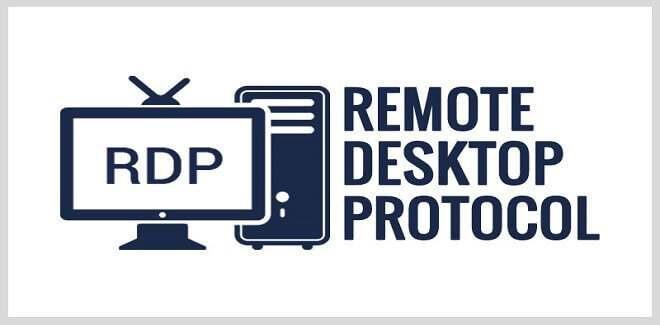Remote Desktop Protocol (RDP) is a protocol or technical standard for remotely using desktop computers. Remote desktop software can use many different protocols, including RDP, Independent Computing Architecture (ICA), and Virtual Network Computing (VNC), but RDP is the most commonly used protocol. RDP was originally released by Microsoft and can be used on most Windows operating systems, but it can also be used on Mac operating systems.
How does RDP work?
Think of remotely controlled drones or toy cars. The user presses a button and manipulates the drone or car from a distance, and transmits their commands to the vehicle. Using RDP is a bit like this: the user’s mouse movements and keystrokes are transmitted remotely to their desktop computers, but over the Internet instead of radio waves. The user’s desktop is displayed on the computer they are connecting to, as if they were sitting in front of it.
The RDP protocol opens a dedicated network channel for sending data back and forth between the connected machines (the remote desktop and the currently used computer). For this, it always uses network port 3389. Mouse movements, keystrokes, desktop display, and all other necessary data are sent through this channel via TCP/IP, which is the transport protocol used by most types of Internet traffic. RDP also encrypts all data to make connections through the public Internet more secure.
Because keyboard and mouse activity must be encrypted and transmitted over the Internet, which takes several milliseconds, and because the desktop display must be transmitted back to the user, there is often a slight delay. For example, if the user double-clicks an application to open it, the “double-click” may not happen within a few milliseconds, because the user’s actions are transferred to the desktop before execution. Then, when the app opens, there may be another short delay in transmitting the display back to the user.
What are the Pros and Cons of using RDP?
RDP has several advantages. One advantage is that it does not require VPN. It can also store data securely on the user’s desktop instead of storing it on a cloud server or user’s insecure personal device. In addition, RDP enables companies with traditional local IT settings to allow their employees to work from home.
However, RDP may cause delays in the user experience, especially when their local Internet connection is slow. This can frustrate remote employees and reduce their productivity. RDP also has some serious security vulnerabilities, making it vulnerable to network attacks.
If you are curious about how to connect Windows server via RDP you can visit our Casbay Knowledge Base.




